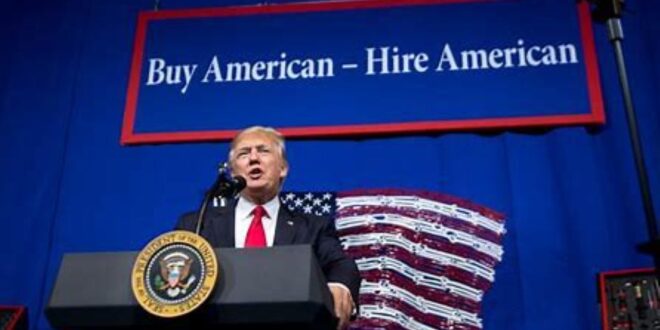In a dramatic turn of events, a senior Federal Reserve official has confirmed that a bailout plan related to the Trump-era tariffs is now ready to be implemented, just as fears grow over a looming $30 trillion market crisis. The announcement comes as the global economy struggles to contain rising inflation, geopolitical instability, and volatile stock market conditions. The Fed’s intervention could play a pivotal role in stabilizing a market that is teetering on the edge of a crisis, with concerns that a broader financial meltdown is imminent.
The Trump administration’s tariffs, originally implemented to address trade imbalances and protect American manufacturing, have left a lasting mark on the global economy. While the tariffs were intended to increase domestic production and reduce foreign competition, they have instead exacerbated supply chain disruptions, higher consumer prices, and a trade war with China that has raged for years. With the market now approaching the $30 trillion mark, the consequences of these policies are being felt across the financial landscape.
A senior Fed official, who spoke on the condition of anonymity, revealed that the central bank has been quietly preparing a response to the escalating crisis. The plan involves utilizing emergency measures to mitigate the impact of the tariffs, potentially including targeted financial support for industries most affected by the trade restrictions. The bailout could also include liquidity injections into the market and additional monetary policy adjustments to shore up investor confidence.
“While the market is showing signs of panic, the Fed has a playbook to restore stability,” the official explained. “The tariff impacts are significant, but we have the tools to address these challenges without triggering further economic collapse.”
Despite the Fed’s confidence, the situation remains volatile. With the market reaching unprecedented levels, and fears that the $30 trillion threshold could spark panic, investors and financial analysts are watching closely to see how the Fed reacts. Many are concerned that the fallout from the tariffs, combined with soaring debt levels, could lead to a financial crisis that would rival the 2008 economic collapse.
The $30 trillion mark is a symbolic tipping point in the global economy. According to some estimates, the total value of global financial markets—stocks, bonds, and derivatives combined—could soon cross this threshold. While some analysts believe the market is overinflated and ripe for a correction, others fear that any sharp downturn could cause widespread damage to both developed and emerging economies.
One of the key challenges facing the Fed is how to address the impact of the tariffs without worsening inflation or sparking another recession. Inflation has already reached levels not seen in decades, with prices for goods and services rising rapidly in the wake of the pandemic. The Fed has already raised interest rates several times in an effort to control inflation, but higher borrowing costs could further strain an already fragile economy.
In the midst of this, the Trump tariff policies have placed an additional burden on U.S. businesses, particularly in manufacturing and agriculture. These industries have faced increased costs due to the higher prices of imported goods and retaliatory tariffs imposed by trading partners. The uncertainty surrounding the long-term impact of these tariffs is causing many businesses to delay investments and scaling back operations, further contributing to the market’s instability.
For now, the Fed’s strategy will focus on providing immediate relief to sectors hit hardest by the tariffs, while working to restore confidence in the financial system. The central bank’s ability to act decisively will be crucial in preventing the market from spiraling into panic and ensuring that the U.S. economy can avoid a deep recession.
While the Fed is confident in its ability to manage the situation, the real question is whether these emergency measures will be enough to address the underlying issues caused by the tariffs and whether they will be effective in calming the markets. With the economic landscape growing more uncertain by the day, the coming months will be critical for both the U.S. economy and the broader global financial system.
As the market watches for the Fed’s next move, one thing is clear: the Trump-era tariff policies, combined with the ongoing market turmoil, have set the stage for one of the most critical economic decisions in recent history. The Fed’s response will be closely scrutinized, with the future of both U.S. and global markets hanging in the balance.
 Business Sandesh Indian Newspaper | Articles | Opinion Pieces | Research Studies | Findings & News | Sandesh News
Business Sandesh Indian Newspaper | Articles | Opinion Pieces | Research Studies | Findings & News | Sandesh News


